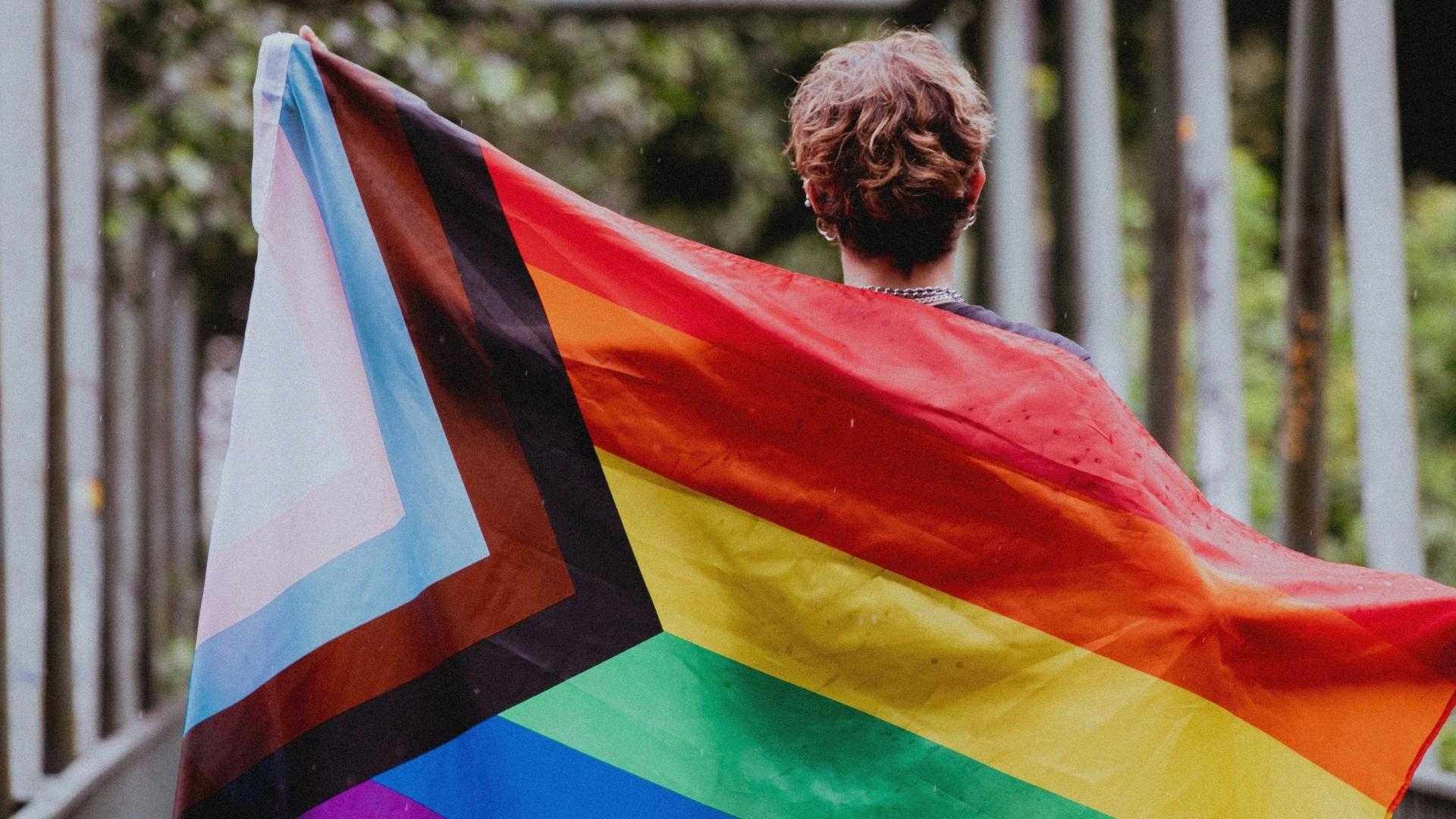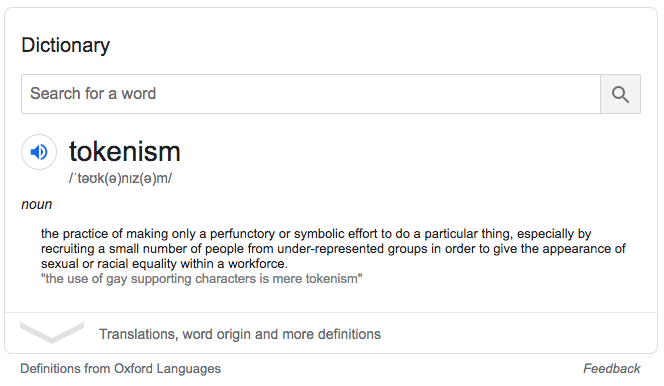
Telling lgbtqia+ stories: creative training with the diversity standards collective
I recently attended an online webinar from the Diversity Standards Collective on LGBTQIA+ Creative, which I thought warranted sharing in a blog post. What inspired this webinar was some hard hitting research, describing a fall in confidence from the LGBTQIA+ community and how brands tell these stories.
The damning results of research from the joint efforts of Gay Times, Karmarama & YouGov show that 82% feel that LGBTQ+ representation is tokenistic – up 1% from last year.
But what is tokenism?
Here is a definition from the Dictionary of Google™:

So what does this mean in the context of this research? Brands are more concerned with looking woke than actually changing how they operate. Challenging the narrative requires an understanding of the two current iterations of creative that features LGBTQIA+:
1. Representation – Visibility, simply showing off the existence of LGBTQIA+ people in daily life.
An ad (that I have lost the name of and link to) was shared with us in the webinar showing a female couple expecting a baby together. Interestly, when surveyed a lot of viewers of the ad just assumed that the women were only friends. This erasure happens all the time, even as way back as Ancient Greece with Sappho the poet. This has even inspired it’s own subreddit: r/SapphoAndHerFriend, sharing eye opening examples of this erasure with a humorous twist.
Below is an example of “blink and you’ll miss it” representation, showing a couple kissing on the bridge in an ad for Amstel beer. In case you missed it, it’s from 00:04-00:05.
2. Telling stories – Moving away from stereotypes and telling authentic stories that resonate with the community.
Representation is growing globally, but the problem lies in point 2, telling authentic stories. Representation can lend itself to tokenism, especially if there’s not much from the brand before and after an ad to back it up.
Telling stories can be difficult too, and brands often get it wrong. But why is this? Some people’s only knowledge of LGBTQIA+ experience are born from stereotypes. Shared with us in the webinar was an example of a brand getting it very wrong, Gosh! Food.
It’s not a phase. Don’t let who you are keep you up at night. Do the right thing and get it off your chest. Because like our food, it’s all perfectly natural. https://t.co/BecXRaoTiN pic.twitter.com/eXevFVzjfw
— Gosh! Food (@Gosh_Food) January 13, 2020
They chose to tell the story of a young person coming out as a ‘flexitarian‘ (a dietary choice where you eat both vegetarian food and meat, i.e. food) to their parents. In the ad, the parents have a very bad reaction – just like the (justified) reaction a lot of people had to the ad. The brand took what is usually a very difficult and painful thing for many people and made light of the experience. Sadly, this could have been avoided had they consulted with the community or made an effort to understand the context of ‘coming out’ and what it means to the people who have actually experienced it.
Companies are falling into the ‘Pride trap’ where LGBTQIA+ experience is marketed as a fun, inclusive event – how many brands are backing up this message year round?
Gay Times CEO Tag Warner was quoted in an article by Decision Marketing impressing the need for a good look at how marketing speaks to their audience:
“Marketers should respond by thinking of LGBTQ+ marketing as a year-round responsibility, and not a calendar celebration. The consumer base is more diverse and aware than ever, which means what was ‘good’ a number of years ago simply doesn’t cut it in 2020. We should be taking this year of reflection to engage with our colleagues and the community and ask their honest opinions – the time to start is now.”
It’s important to remember that no-one is the same: not one person in the whole world has had the exact same experiences, especially true of LGBTQIA+ people. The worst thing you could do is to lump everyone into the same category, instead work on understanding the nuance of the wholly inclusive human experience.
The report I mentioned at the start of this blog had five steps for brands that echo a lot of the same principles shared by the Diversity Standards Collective in the webinar I attended, you can read them in full here.
For authentic Allyship you need:
- Cognitive diversity: An inclusive, intersectional workforce with diverse perspectives.
- Open communication with the audience: Sense check with whichever community you’re speaking to when you’re making creative, better yet – hire them!
- Avoid the Pride trap: Allyship is a year round job, not just for Pride.
- Walk the walk: Get involved with causes, do something that doesn’t only benefit the company.
- Be transparent: Tell people what you are doing and where work needs to be done. Set clear goals to show your long-term commitment to inclusive representation.
I want to say thank you to the Diversity Standards Collective for their webinar, where most of this blog post was inspired.






